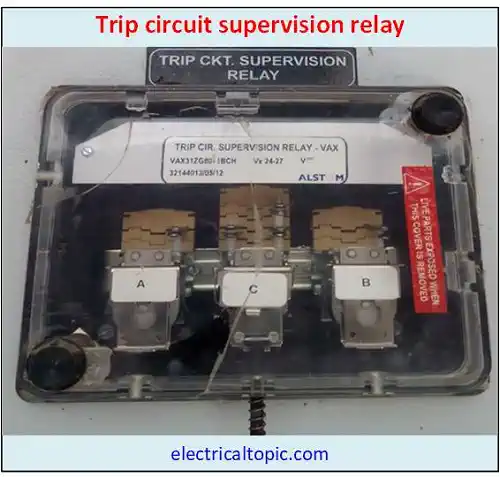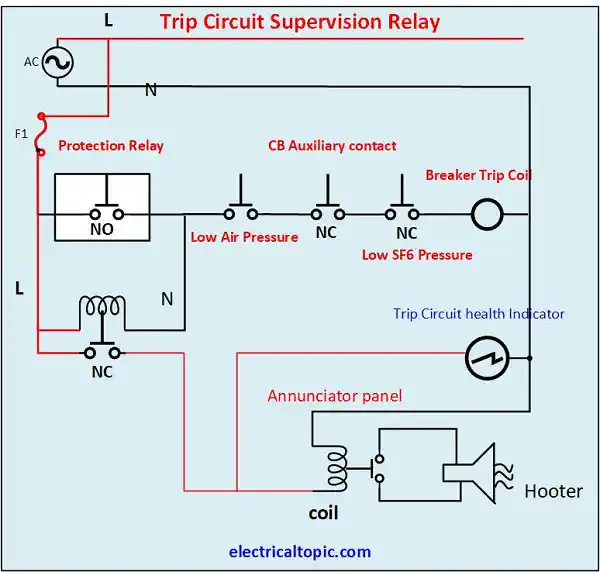Trip Circuit Supervision Relay
Working principle and diagram.
1 - What is the Trip circuit supervision relay?:

The trip circuit supervision relay is a monitoring relay and it is
known as numerical name 96 S. it is used for continuous monitoring
of breaker trip circuit healthy or not healthy in HT panel in any
premised or substation. If the trip circuit will not ok then it will
provide an alarm for avoiding any fault.
In an electrical panel trip circuit of the circuit breaker is
critical. During fault conditions If the trip circuit did not find
any trip sensing then the breaker will not be disconnected and the
resultant by this problem may be a very loss.
So, keeping the trip circuit healthy the TCS relay is used so that
system always remains healthy.
The trip circuit supervision relay is used in the HT panel for
continuous monitoring of breaker trip circuit healthy. If the
circuit is not healthy or abnormality in the trip circuit then it
will activate to alarm.
The reason may be Trip circuit for unhealthy:
Many contacts are connected in series along a trip circuit of an electrical circuit breaker.
- Loss of breaker auxiliary supply.
- Low gas pressure in SF6 breaker.
- Abnormal vacuum pressure in VCB.
- Trip circuit supervision relay also may be faulty.
2 - Trip circuit supervision(TCS) relay connection diagram.

3 - Working principle of trip circuit supervision(TCS) relay.
Working principle of TCS relay has many important points given below mentioned.
- Monitoring the complete trip circuit of the circuit breaker.
- Identify the faults in the supervised circuits, like the not available voltage, the circuit to be open, contact flashing in connections, and resistance abnormal in wires, contacts, and trip coils.
- C. Low-level measuring current enables application in sensitive or high resistance circuits.
- False signals are avoided for circuit breaker smooth operations.
- Operation indication by a single dual-color LED Complete range of rated voltages either AC or DC.
- Galvanic isolation is possible between auxiliary source and supervised circuit Very low burden on the auxiliary source.